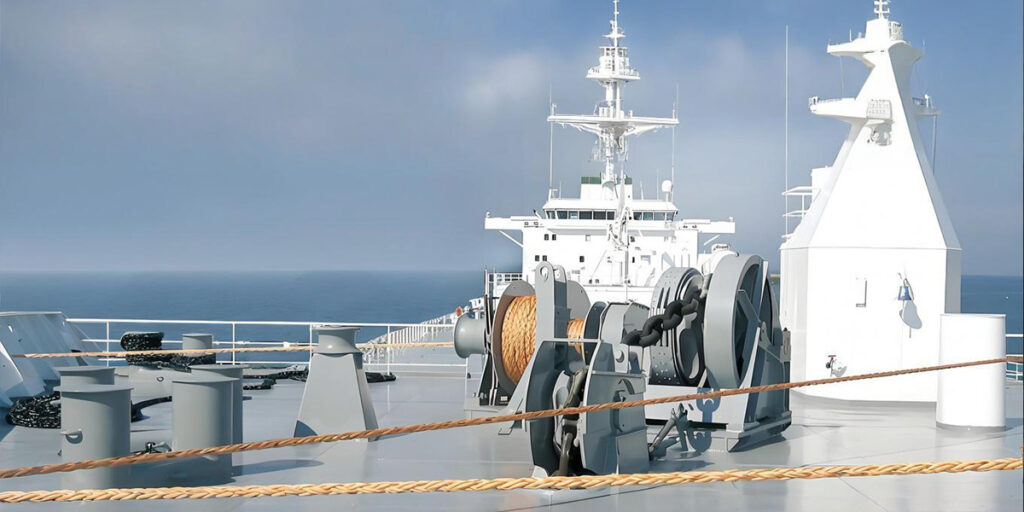In the early days of seafaring, ships were entirely dependent on human power and mechanical intuition. Sailors controlled every aspect of the vessel with levers, wheels, and gauges, relying on physical strength and years of experience. Fast forward to today, and ship control systems have become digital, automated, and deeply intelligent.
This transformation didn’t happen overnight. It reflects decades of technological progress, safety demands, and the growing complexity of ship operations. Let’s take a look at how ship control systems evolved from hands-on operation to highly integrated digital platforms.
Manual Era: Strength and Skill
For much of maritime history, ship operations were controlled manually. Engine commands were transmitted via engine order telegraphs. Valves were opened by hand. Steering was done with physical wheels connected by chains or hydraulics to the rudder. Each system worked independently, and it was the crew’s responsibility to coordinate their operation.
These systems required constant monitoring and immediate human response. Any mistake or delay could cause accidents, especially in rough seas or crowded ports.
Electro-Mechanical Phase: A First Step Toward Automation
With the introduction of electricity, ship controls began to evolve. Switches and motors replaced some manual systems. Communication between the bridge and engine room improved with intercoms and control panels. Motors could now operate winches, pumps, and ventilation systems more efficiently.
This was the first real step toward automation. Alarms were added to detect abnormal conditions, and automatic control loops began managing engine speed, pressure, and temperature.
Digital Integration: Ships Get Smart
By the late 20th century, digital technology brought a major shift. Sensors, software, and microcontrollers allowed systems to not only be operated remotely but also monitored in real time. Ships began using central control panels to operate propulsion, power generation, ballast water systems, cargo pumps, and environmental equipment.
Digital displays replaced analog gauges. Engineers could now detect problems instantly, adjust settings with a few clicks, and rely on automation to keep systems running safely and efficiently.
Ship Automation Today: The Digital Bridge
Modern ships are often equipped with integrated automation systems that bring all major shipboard functions together into a single digital network. These systems can automatically balance power loads, monitor engine health, control ballast tanks, and even manage emergency systems without direct human input.
On the bridge, digital navigation systems communicate with autopilot, radar, weather databases, and engine control systems. Engineers in the engine control room monitor everything through touchscreens and graphical interfaces instead of physically inspecting equipment.
Remote Monitoring and the Cloud
Some shipping companies now monitor their fleets remotely through cloud-based systems. Data from ships is transmitted via satellite to control centers on shore, where technical teams can detect faults, schedule maintenance, and optimize performance in real time. This marks a new era of collaboration between onboard crew and shore-based engineers.
Cybersecurity and Human Oversight
With digital control comes new challenges. Cybersecurity is now a critical part of ship operation. Systems must be protected from hacking and malfunction. Meanwhile, crews are being trained to manage both hardware and software, ensuring that technology supports rather than replaces human judgment.
Looking Ahead: Toward Autonomous Ships
The future points toward fully autonomous or remotely operated ships, especially for short-distance transport and research missions. These vessels will rely on artificial intelligence, machine learning, and advanced sensors to make decisions in real time. Though full autonomy is still years away, the control systems already in use are laying the groundwork.
Conclusion
The journey from manual control to digital automation reflects the broader transformation of the maritime industry. Ship control systems today are safer, faster, and more efficient than ever before, reducing risks and improving operational performance. As ships become smarter, the role of the crew is also changing—from operators to supervisors of intelligent systems. Understanding this evolution is key to navigating the future of maritime technology.
